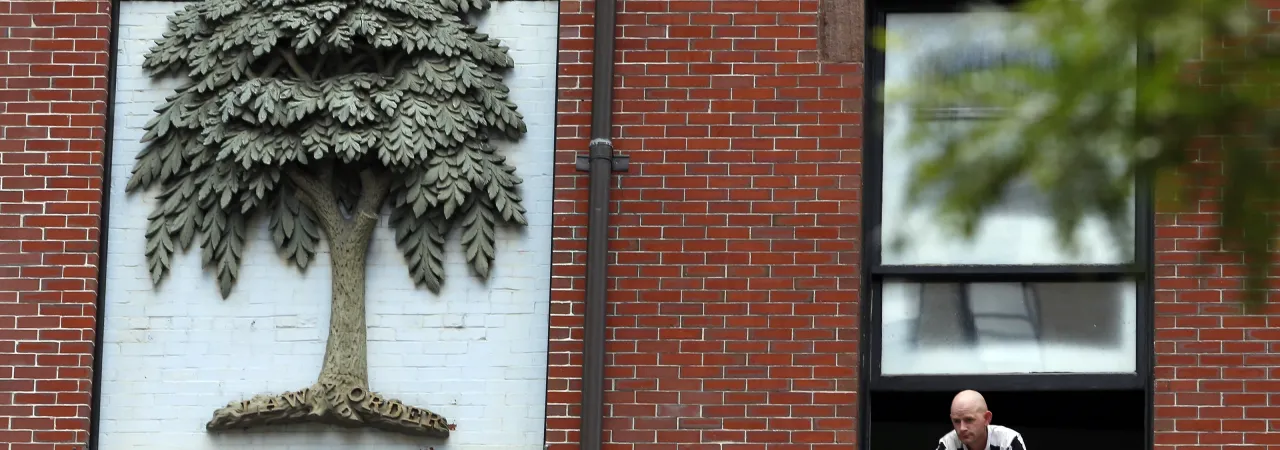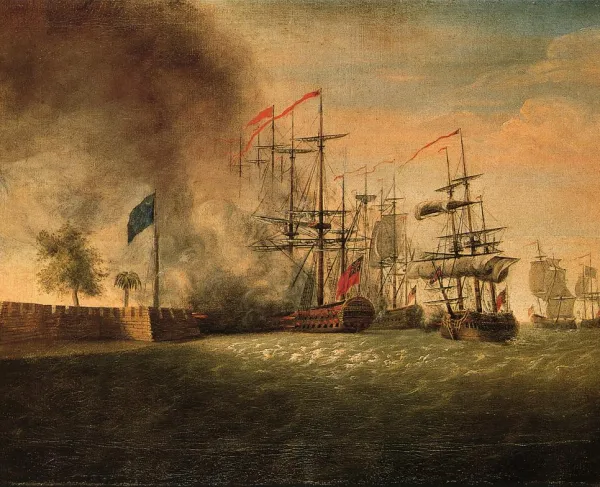
The Liberty Tree via The Boston Globe
The Liberty Tree was a large elm tree located near the Boston Common at the modern day intersection of Washington Street and Essex Street. It was planted in 1646 and was nearly 120 years old by the time of the American Revolution. The area under its branches became a popular meeting place of Boston citizens in the 1760s as it was on a main artery into and out of the town. The Sons of Liberty, a secret society of men who advocated for the rights of colonists, would meet at the tree and stage protests to British taxation and rule.
In 1765, large protests occurred at the tree to argue against the Stamp Act. The first of these protests had the effigy of a stamp collector Andrew Oliver hanging from the tree as well as a green painted boot with a devil holding a paper reading "What greater joy did ever New England see than a stampman hanging on a tree!" A crowd of protestors took the effigy of Oliver to his house where they proceeded to behead and burn the likeness before assaulting his home. Oliver resigned as the stamp collector in response.
The next year, the Stamp Act was repealed, and the citizens of Boston gathered at the Liberty Tree and lanterns were hung in the branches as a celebration. The Sons of Liberty fastened a copper sign to the tree that read: “This tree was planted in the year 1646, and pruned by order of the Sons of Liberty, Feb. 14th, 1766.” Soon a liberty pole and a flag were raised at the tree as well.
The Liberty Tree continued to be a place for protests and public displays throughout the 1760s and 1770s. In 1770, the funeral for the Boston Massacre victims traveled pass the tree.
Bostonians held demonstrations, tarring and featherings of Royal officials, and displays of mock executions under the tree. One Loyalist decried the tree “was consecrated for an idol for the mob to worship; it was properly the tree ordeal, where those, whom the rioters pitched upon as state delinquents, were carried to for trial, or brought to as the test of political orthodoxy.” Soon, other towns and cities across colonial America began designating liberty trees for places of protest to British taxation.
However, in 1775, during the Siege of Boston, Boston Loyalists and British soldiers cut the stately elm tree down and burned it. After Patriots regained control of Boston in 1776, a liberty pole was erected over the stump of the Liberty Tree. While the Liberty Tree no longer existed, it continued to be a potent symbol in America. In 1787, Thomas Jefferson famously said in an allegory to the Liberty Tree that “the tree of liberty must be refreshed from time to time with the blood of patriots and tyrants.”
In 1825, during his triumphant tour of America, the Marquis de Lafayette proclaimed to the citizens of Boston that “the world should never forget the spot where once stood Liberty Tree, so famous in your annals.” Today the site where the tree once stood has a small plaza with a plaque saying: “Sons of Liberty, 1766; Independence of their Country, 1776.” The history of the Liberty Tree continues to be an important part of understanding the early colonial protests and how many of those protests and tactics straddled a fine line between justified calls for liberty and violent mob rule.





